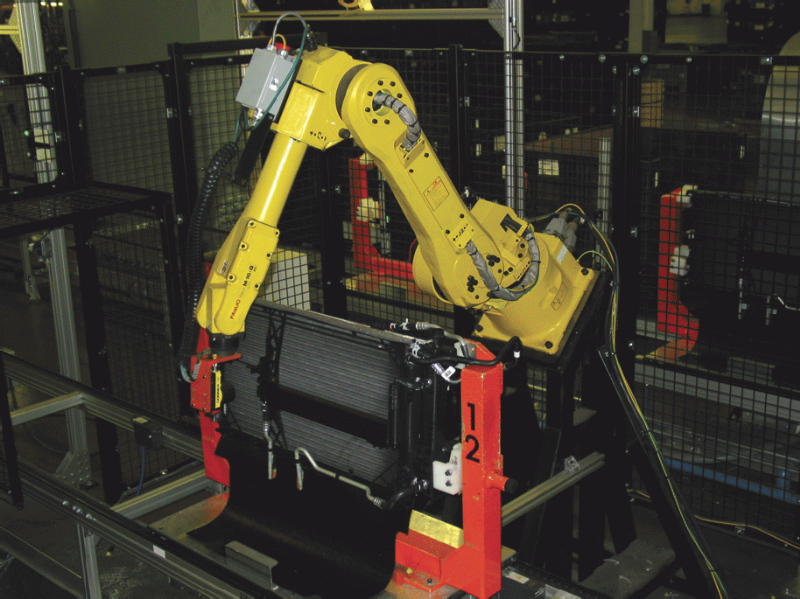 Advertisement feature
Advertisement feature
The Piston Group, located in Michigan and Missouri, USA, builds cooling modules for seven different vehicles. These cooling modules are built on five different assembly lines, each line building more than 50 different variants in sequence to the customers’ demand
Many different inspections need to be performed on each module including verifying the build variation, checking electrical connections and all dimensional requirements. In the past, inspections were performed in an automatic check station that utilised multiple pneumatic actuated slides that were fitted with linear probes, vision systems and a wide variation of sensors to inspect the different components. The problem with this approach was that each individual slide costs approximately $15,000 or more, and the slide had to be replaced whenever the corresponding part specifications or design changed.
The conventional approach to replacing the slides with machine vision would have required as many as 30 different fixed cameras, each with special lighting requirements. The Piston Group developed a much less expensive and more flexible solution by mounting a single Cognex In-Sight 5603 vision system on a Fanuc robot. The robot moves the vision system into position to capture the 30+ images in less than 45 seconds, completely inspecting the module. The In-Sight vision system can be modified to inspect for future design changes easily with a few hours of programming time. The new inspection system has substantially improved quality by inspecting more points at a higher level of accuracy while reducing initial investment by 40 per cent and retool cost by 80 per cent.
“We worked with the Vision & Traceability Group of McNaughton McKay Electric to identify the right camera for this application,” says Patrick O’Dell, control engineer for The Piston Group. “We selected Cognex because its vision systems provide the wide range of tools needed to inspect the many different points involved in this application. Also, Cognex’s PatMax geometric pattern matching tool provides substantial improvements in accuracy by accurately determining the part location. A single Cognex In-Sight 5603 met the requirements of this application by accurately inspecting 30+ very different features in many different locations in less than 45 seconds. Plant-wide we are using this camera for more than 90 different inspections.”
Demanding quality requirements
The quality requirements for the modules are demanding. First, each module must be correctly configured for the vehicle it will be installed on, with the proper wiring harness and other components. Second, many components need to be installed within tight dimensional tolerances. Several hoses and clamps must be installed within 1mm of a specified location and all electrical connectors must be fully seated and engaged.
In the past, many of these inspections were performed in a check station by mechanical probes mounted on slides. This approach required that a custom slide be designed and built for each dimension that was checked. Whenever the dimension was changed, the slide had to be modified or replaced with a new design. The cost of retooling for an all new vehicle model was high and required approximately two weeks of downtime to retrofit the entire check station. Prior to model changeover, the company would build small quantities of pre-production new model parts and these parts had to be inspected manually due to the station not being changed over. Many inspections, such as determining whether parts were identified and installed properly, were performed by 200 per cent visual inspection by quality engineers. The flexibility of the new system allows for accommodation of both current and new model production, reducing this reliance on visual inspection.
“Every time the customer made a single engineering change, the cost was a minimum of $15,000,” says Kevin Miller, director of manufacturing engineering for The Piston Group. “We wanted to implement a flexible vision system to reduce cost and turnaround time on changes. We also wanted to reduce the amount of required manual inspection to improve quality. The normal practice is to use one camera per inspection point but this approach would have taken up too much space and the cost was too high.”
The vision system is able to inspect to a much higher level of accuracy than previous inspection methods. The vision system also inspects twice the number of points that the company was able to inspect in the past with mechanical probes.
“The bottom line is that we have improved quality by inspecting more points with a higher level of accuracy with 40 per cent less upfront investment and 80 per cent lower cost for changes than would have been required by a traditional check station,” Miller concludes.

